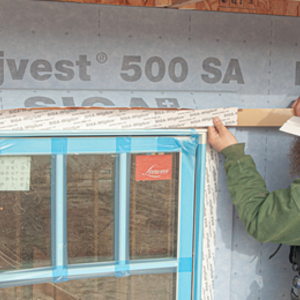
Most modern windows are equipped with double or triple glazing in the form of insulated glazing units (IGUs). These IGUs have an airtight seal at the perimeter that traps some type of gas between the window panes—usually argon, but sometimes krypton or ordinary air.
Ideally, the IGU perimeter seal is permanent. If the IGUs are filled with argon or krypton—gases that improve the IGU’s energy performance—you don’t want any of the precious gas to leak out. Moreover, you never want any humid air to enter into the space between the glass panes, since the entry of humid air can lead to condensation between the panes (sometimes called fogging).
IGUs perform well when they are installed at an altitude close to that of the factory where the IGUs were assembled. However, if IGUs from a sea-level factory are transported to a job site at a high elevation—usually defined as a location above 5,000 or 6,000 feet—then all kinds of bad things can happen:
- Since the atmospheric pressure above 5,000 feet is much lower than it is at sea level, the panes of an IGU can pillow out—that is, become convex—distorting the view through the windows.
- The IGU’s perimeter seals can be stressed, leading to leaks that allow argon to escape or moist air to enter the space between the panes.
- If the argon escapes, the window’s U-factor may not match the U-factor promised by the window manufacturer at the time of sale.
- In some cases, the glass can shatter.
These are old problems
Window experts have been aware of the problems associated with high-altitude installations of IGUs for decades, and many technical articles address the problems. Back in 2000, for example, BuildingGreen published an article on the topic called “High Elevation Problems Jeopardize…
Weekly Newsletter
Get building science and energy efficiency advice, plus special offers, in your inbox.

This article is only available to GBA Prime Members
Sign up for a free trial and get instant access to this article as well as GBA’s complete library of premium articles and construction details.
Start Free TrialAlready a member? Log in















7 Comments
interesting story....it brings to mind a project we had about 20 years ago on the east coast...we initially wanted to use windows from a manufacturer in the northwest. We were told that transporting them to the east was problematic as they couldn't come over the Rockies as the altitude would affect the insulation value. Eventually, they worked out a route that took them south down to New Mexico where they wouldn't exceed 5,000 feet on the trip to the east. For one reason or another, we ended up with another window as best I can recall.
What about the elevation while the windows are being transported, is that an issue? ie Even if the windows are made at 5300 feet and I am in Idaho at 6200 feet, the windows will pass through lower elevations on the way.
Also, I am having a heck of a time finding high R value windows (for climate zone 6b; maybe I don't need R8 or 9 as PH would require in my climate zone, but at least R6 or 7). Unfortunately Alpen doesn't make them, nor most I run into. Have other leads for 6000 elevation R6-7 with wood interiors?
Qofmiwok,
Q. "What about the elevation while the windows are being transported, is that an issue?"
A. Yes, that's an issue, as Hugh Weisman already mentioned in Comment #1. In general, the Rocky Mountains form a divide for U.S. window manufacturers; if you live east of the Rockies, you'll probably be buying your windows from a distributor or manufacturer located east of the Rockies, and if you live west of the Rockies, you'll choose a distributor or manufacturer from your side of the mountains.
Here is a link to an Alpen Windows web page that discusses their windows with a U-factor of 0.10 (that's R-10) -- that should be good enough to meet your needs, shouldn't it?
Thanks. Yes R10 is more than enough, but they don't come with wood interiors on tilt-turns.
Also, my question about elevation is whether it's the initial and final elevations that matter, or the temporary transport through a higher or lower elevation.
Qofmiwok,
Q. "My question about elevation is whether it's the initial and final elevations that matter, or the temporary transport through a higher or lower elevation?"
A. Either one can cause problems.
So the odd thing about this reply is that I've talked to a dozen window manufacturers of Passivehouse European Windows, and they all say their solution works and the elevation change is not a problem. Only 1 has concerns.
Qofmiwok,
Q. "So the odd thing about this reply is that I’ve talked to a dozen window manufacturers of Passivhaus European windows, and they all say their solution works."
A. So what is "their solution"? Have you asked these manufacturers what "their solution" is?
Log in or become a member to post a comment.
Sign up Log in